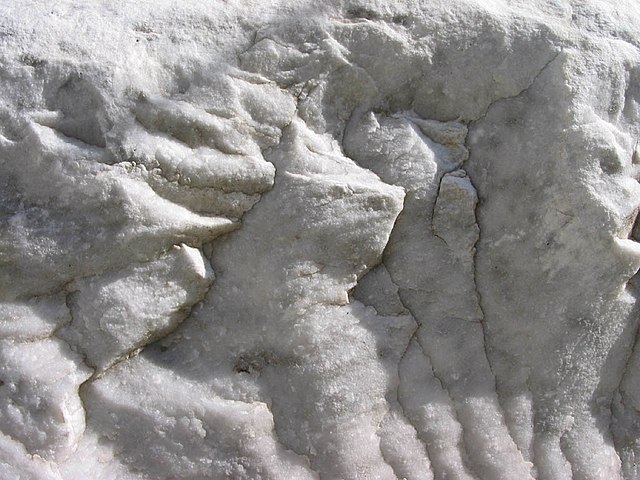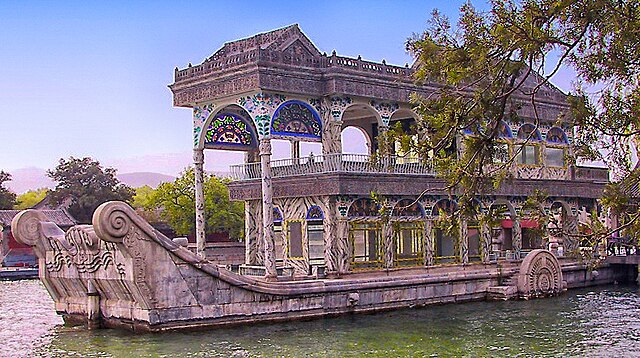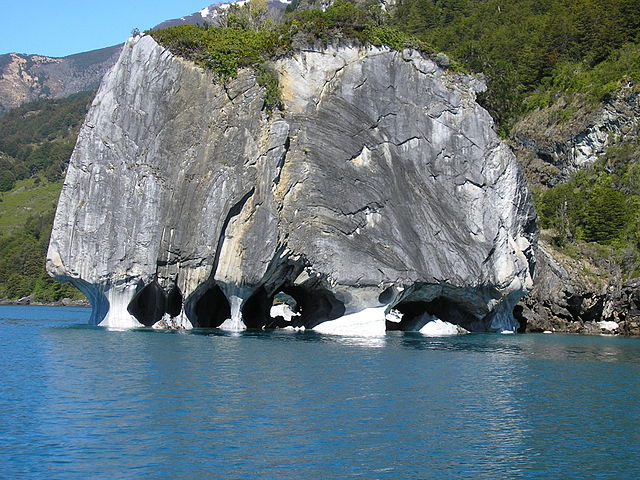The Marble Arch is a 19th-century white marble-faced triumphal arch in London, England. The structure was designed by John Nash in 1827 as the state entrance to the cour d'honneur of Buckingham Palace; it stood near the site of what is today the three-bayed, central projection of the palace containing the well-known balcony. In 1851, on the initiative of architect and urban planner Decimus Burton, a one-time pupil of John Nash, the arch was relocated to its current site, near the northeast corner of Hyde Park, so that expansion of Buckingham Palace could proceed.
The arch with The Cumberland Hotel, Great Cumberland Place and the trees of Bryanston Square beyond, parts of the British Regency-architecture Portman Estate
Model of John Nash's original design for the arch, now in the Victoria and Albert Museum in London
Nic Fiddian-Green's Still Water, with Marble Arch in the background
Aerial view of the arch and its surroundings
Marble is a metamorphic rock consisting of carbonate minerals (most commonly calcite (CaCO3) or dolomite (CaMg(CO3)2)) that have recrystallized under the influence of heat and pressure. It has a crystalline texture, and is typically not foliated (layered), although there are exceptions.
Carrara marble quarry in Italy
The Marble Boat, a lakeside pavilion in the Summer Palace in Beijing, China
The Taj Mahal is clad entirely in marble
Folded and weathered marble at General Carrera Lake, Chile








